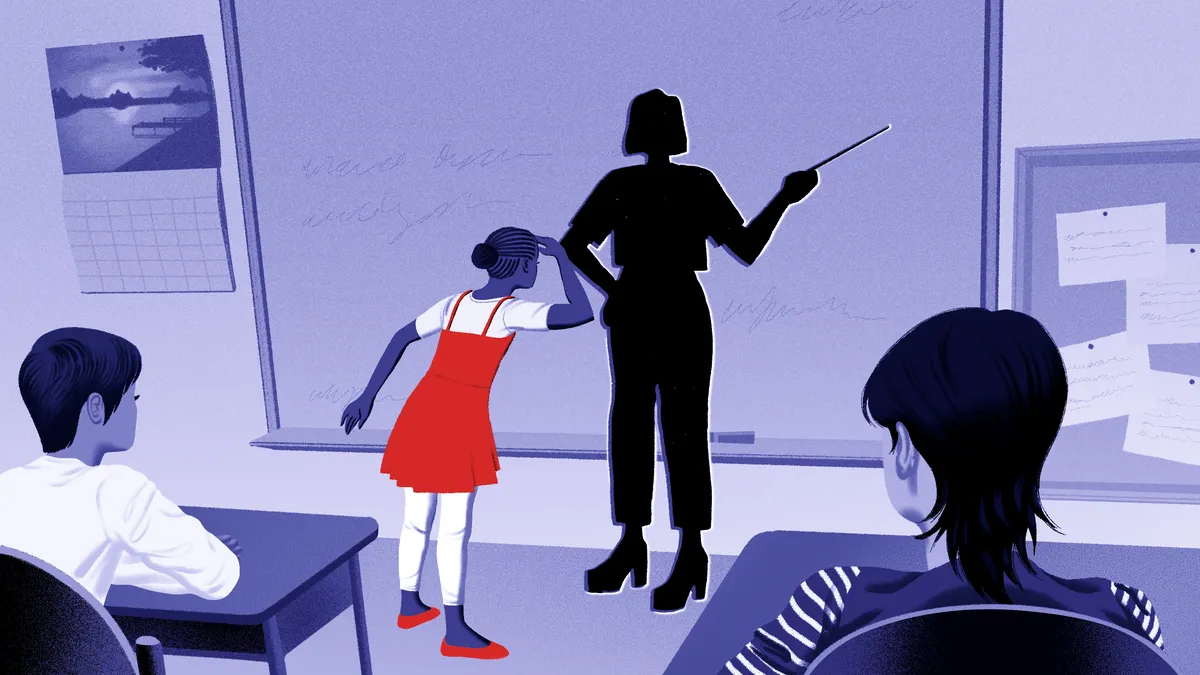Staffed Up is a monthly series examining school staffing best practices and solutions for teacher recruitment and retention. Catch up on previous installments here.
Though it’s expected that teacher turnover will decrease over the next few years, it’s estimated that there were at least 49,000 vacant teaching positions and 400,000 underqualified educators instructing in classrooms nationwide during the 2024-25 school year, according to a project led by researchers from the University of Missouri and the University of Pittsburgh.
Texas has one of the highest teacher underqualification rates in the country, according to the University of Missouri-University of Pittsburgh research project.
Between the 2019-20 and 2024-25 school years, the total number of uncertified teachers in Texas jumped from 12,900 to 42,100, the Texas Education Agency found. That means 12% of the state’s total teachers were uncertified by 2024-25 compared to 3.8% before the pandemic.
On top of that, 34% of the nearly 49,200 newly hired teachers in the 2023-24 school year had no Texas teaching certifications, according to TEA data.
Texas makes a change
Texas’ growing reliance on uncertified teachers stems from the District of Innovation policy enacted by the state legislature in 2015.
Some 986 Texas school districts participate in the program, which essentially automatically allows them to waive teacher certifications even though it was initially intended just for career and technical education teachers, said Jacob Kirksey, an assistant professor of education policy at Texas Tech University. Kirksey is also the associate director of the university’s Center for Innovative Research in Change, Leadership and Education.
Since the pandemic, however, there has been a “dramatic spike” in districts using the District of Innovation program to help with hiring uncertified teachers for foundational subject areas, Kirksey said.
According to Kirksey’s research, Texas’ use of uncertified teachers with no classroom experience led to major learning losses for students. Those taught by new uncertified educators lost 4 months in reading and 3 months in math compared to their peers taught by certified instructors.
But a major shift is underway: HB2, a new state law enacted in June, will phase out all uncertified teachers in foundational content areas by the 2029-30 school year.
Now in Texas, Kirksey said, “we've seen the extent of the damage. I think our legislature realized, ‘OK, we created this hole, and now we need to put in the work to fix it.’”
HB2 also incentivizes districts to hire high-quality teachers, he said. Under the new law, districts can receive $1,000 bonuses for every teacher they certify who previously lacked necessary credentials. Other larger bonuses can be earned from the state for mentoring and training teachers.
South Carolina embraces uncertified teachers
On the flip side, some states are implementing laws that would allow more uncertified teachers to enter classrooms.
In South Carolina, for instance, a law enacted in May launched a five-year pilot program that will allow public school districts to hire uncertified teachers — capped at 10% of a district’s instructional staff.
These teachers must have a bachelor’s or master’s degree with at least five years of relevant work experience in the subject area they are hired to instruct. Uncertified teachers must also enroll in an educator preparation program within their first three years of instruction.
The new law comes as South Carolina’s school districts reported over 1,000 teacher vacancies at the beginning of the 2024-25 school year — 600 fewer vacancies, or a 35% decrease, from the previous year, according to a November 2024 analysis by the Center for Educator Recruitment, Retention, and Advancement.
Dena Crews, president of the South Carolina Education Association, said she’s concerned that the law doesn’t require uncertified teachers to take any foundational training before they can instruct students. “The business world and the education world are not the same,” she said.
Uncertified teachers also don’t have any incentive to stay in schools and won’t face any consequences if they quit in the middle of their contract, Crews said. For instance, if one of these teachers doesn’t know anything about classroom management and they can’t get students’ attention for days on end, they may not want to come back and teach.
“So those kids are left at a deficit,” Crews said. “That didn’t help with the shortage. It helped with the shortage for a couple of days and really didn’t do anything, because those kids didn’t learn anything.”
Overall, Crews said she hopes South Carolina’s uncertified teacher pilot program “will not become the norm” for states and school districts nationwide.
Texas has watched its uncertified teacher policies play out longer than other states, Kirksey said. Some lessons learned from watching this trend, he said, are that states facing educator shortages should avoid the easiest option, which is to “deregulate everything” for teaching regulations like in South Carolina. Instead, states should look for ways to prioritize training people to become high-quality educators.
“I do think it's just a matter of time before folks realize that if we choose to de-incentivize quality, then it's going to impact kids,” Kirksey said.
Kirksey said he doesn’t believe there’s a lack of qualified adults who can teach. Rather, there’s “a lack of educators who are willing to be in the classroom, who are well-prepared.”
That’s why states and districts ultimately need to address issues with teacher pay, burnout and job satisfaction, Kirksey said. In Texas, he said, “I feel like, as a state, we finally recognize that.”










